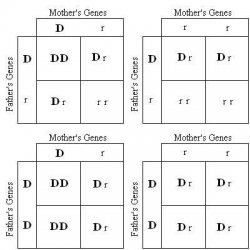If Plakat is the base fin type of the species from which all the other Splendens were developed, how is it that the part left out of the description is that a HM Splendens is has the full long tail?
In the hobby long-finned fish are generally more popular and common, so it's just not considered something that's worth mentioning... a fish is assumed to be long-finned unless it is specifically stated otherwise. This may also have to do with the fact that the long-finned trait is dominant

oppositearmor, here's a breakdown of the info on tail types. As you may know, most animals carry two copies of every gene, one from each parent. If a trait is dominant, then if the gene for it is carried it doesn't matter what the other copy of the gene is, the dominant trait is what you're going to see. If it's recessive, you need two copies of it to be able to see the effects of the gene.
Doubletail is recessive
Single tail is dominant
Long fins is dominant
Short fins (plakat) is recessive
Given this, you know that all my fish carry two copies of the plakat gene and will only produce plakats if bred to another plakat because this is the only gene either parent has to give. Since one of their parents was DT, you know that they also carry one copy of the DT gene since this is all the DT parent has to give. Only one, because they obviously are not DTs themselves. This means they are plakats with DT geno. Genotype pkpkSTdt, where pk = plakat, ST = single tail, and dt = double tail.
If you breed two siblings together, you will get all plakats because it is a recessive gene expressed in both parents, but with the DT trait, each parent could either throw a gene for single tail or a gene for DT. So possible genotypes of the resulting fry are as follows:
STST if both parents throw the single tail gene
STdt or
dtST if one throws single tail and the other throws DT
dtdt if both throw the DT gene
Since single tail is dominant over DT, fish carrying even just one copy of the ST gene will be single tail. This means that 3 out of the four possible genotypes will be single tailed, and one will be DT -- 3:1 ratio, or 75% single tail, 25% DT.







